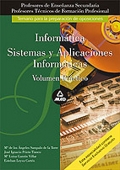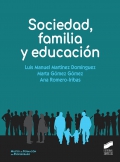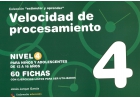Conclusiones - Lenguaje de señas entre niños sordos de padres sordos y oyentes
5.1 CONCLUSIONES:
1. El niño sordo con padres sordos maneja el Lenguaje de Señas de manera más adecuada. La razón fundamental es la exposición natural a las señas que tiene el niño sordo cuyos padres son sordos, la cual funciona como la muestra lingüística que va a adquirir.
2. Tanto los oyentes como los sordos, sin importar su tipo de padres, nacen igualmente competentes para la adquisición del lenguaje y el desarrollo de un sistema comunicativo que les permita interactuar con su medio ambiente.
3. Los niños sordos tienen una predisposición natural a adquirir el lenguaje de señas; pero sólo lo adquirirán si en su medio es utilizado, sino sólo desarrollarán una serie limitada de gestos.
4. El Lenguaje de Señas Peruanas no es la copia del castellano peruano.
5. Los sordos no conforman una población homogénea. Se les puede diferenciar por el tipo de grado de pérdida auditiva (de leve a severa), por el tipo de padre que tienen y por la edad en que adquirieron la sordera (pre o postlocutivamente).
6. Tanto los hijos de sordos como los de oyentes pasan por una etapa prelingüística del desarrollo del lenguaje.
7. Tanto los niños sordos como los oyentes captan visualmente la lengua de sus padres. Con el tiempo en el oyente esta información visual se vuelve secundaria, mientras que en los sordos la información visual dada se vuelve primordial
8. El sordo que conoce el Lenguaje de Señas y es competente en la lengua de su comunidad debe ser considerado como bilingüe
9. Los niños sordos, en general, aprenden a recuperar la información extralingüística con más precisión.
10. La actitud del padre es básica para que el desarrollo del niño, por eso sería recomendable que los padres oyentes aprendieras señas a fin de comunicarse realmente con sus hijos de una manera más significativa.
11. El Lenguaje de Señas puede ser un parámetro para analizar los elementos de la Gramática Universal, ya que tiene los mismos componentes que cualquier lengua natural.
12. No todos los lenguajes de señas son iguales en todas partes del mundo. Lo que es igual es el tipo de modalidad desarrollada para comunicarse usando las manos; pero las señas que designan los conceptos no son necesariamente iguales.
13. El mejor sistema de enseñanza para el sordo es el Método Bimodal, pues no lo aleja de la cultura sorda y permite que pueda comunicarse con las personas oyentes.
14. El método ideal para educar a la persona sorda sería aquél que considera una modalidad Educación Bilingüe Bicultural.
5.2 RECOMENDACIONES:
1. El Estado debe convocar a los lingüistas para que caractericen y estudien el Lenguaje de Señas Peruanas.
2. Capacitar en Lenguaje de Señas Peruanas Peruanas a los maestros de sordos en todo el país.
3. Recomendamos hacer un Censo Nacional de Personas Sordas. Es importante conocer con seguridad cuántos sordos existen en el Perú. Es importante conocer el tipo de padres que tiene esta persona sorda, qué grado de sordera padecen, cuál es el tipo de sordera más común, el momento de la aparición de la sordera, cuántos hombres y mujeres sordas existen, distribución de la edad entre las personas sordas, su grado de escolaridad, cuántos sordos hay en cada región del país, cuántos de ellos trabajan. No podemos ayudar a quienes no conocemos.
4. Oficializar el Lenguaje de Señas Peruanas para poder empezar a considerarlo como una de las lenguas en las cuales se imparta la educación. Seguir considerando la Educación del Sordo como Educación Especial en el sentido de Retardo hace que realmente se perjudiquen.
5. El sordo es inteligente; sin embargo, la Currícula que se maneja para la persona sorda es prácticamente de Retardo Mental. Oficializar el Lenguaje de Señas Peruanas permitiría que el Estado asuma que lo único de especial que debe tener la educación del sordo sea el uso del Lenguaje de Señas Peruanas.
6. Proponer al Congreso el debate Constitucional para considerar la educación del sordo como Bilingüe y Bicultural.
7. Creación de programas Bilingües Biculturales para el sordo; realidad que se da en otros países como: Uruguay, Suecia y Estados Unidos con bastante éxito; lo cual ha llevado a que los sordos progresen enormemente.
8. Conscientizar a los padres oyentes de los niños sordos con respecto al Lenguaje de Señas Peruanas, explicarles que no son gestos ni mímicas de las cuales tengan que avergonzarse. Es necesario explicarles que éste es un lenguaje y que puede favorecer a sus hijos porque es una herramienta de comunicación. Hay que motivar a los padres oyentes a aprender el Lenguaje de Señas y a aceptar que la discapacidad auditiva no condena a los niños al atraso, si nos comprometemos realmente en su educación y desarrollo.
9. Permitir el acceso a la Educación Secundaria a las personas sordas. Hemos visto que el Estado no tiene ningún interés en la Educación de la persona discapacitada, sea ésta sorda, ciega, muda o impedida física.
10. Hay que recordar que cada uno de nosotros tiene una labor en la enseñanza de la tolerancia hacia la persona discapacitada. Esta última recomendación es para cada uno de nosotros mismos.
Referencias
1. Aitchison, Jean. Words in the mind. An introduction to the mental lexicon.Ed. Blackwell. Massachusetts, 1998.
2. Aroca, Manuel. Método para Enseñar la Palabra al Sordo. Ed. Instituto Hispano Americano de la Palabra. Buenos Airs, 1976.
3. Arroyo, Rosario. "Atención temprana y estimulación del Desarrollo en el Deficiente Auditivo". En: Desarrollo Curricular y Organizativo del Niño Sordo. Ed. Aljibe. Málaga, 1998.
4. Ayuso, María Jesús. "Fray Pedro Ponce de León, Primer Educador de Sordos". En: Revista de Educación Especial. Universidad Femenina del Sagrado Corazón. Año I Vol. 1. Lima, Nov. Del 2001.
5. Azcoaga, J.E. Los retardos del lenguaje en el niño. Ed. Paidós Buenos Aires, 1979.
6. Berruecos, Pedro. El Niño Sordo de Edad Preescolar. Ed. Trillas. México, 1995.
7. Behares, Luis Ernesto. "Implicancias Teóricas (y De Las Otras) del Descubrimiento de Stokoe". Trabajo presentado en el IV Congreso Latinoamericano de Educación Bilingüe del Sordo, Santa Fé de Bogotá, Octubre de 1997.
8. Bornstein, Harry. Manual Communication. Ed. Gallaudet University Press. Washington D.C., 2002.
9. Brown, Roger. Psicolingüística. Ed. Trillas. México, 1981.
10. Brown, Roger y Úrsula Bellugi. "Three Processes in the Child's Aquisition of Syntax" en: Erick Lenneberg (ed.) New Directions in the study of the Language. Cambridge, Massachusetts. The M.I.T. Press, 1964.
11. Brownlee, Shannohn. The signs of silence. En: News & World Report. Octubre, 16, 1989.
12. Byrd, Todd. The Art and Science of Interpreting. En: Gallaudet Today.- The Magazine. Volumen 23, Número 2. Ed. Gallaudet University. Washington, D.C. 2002.
13. Byrd, Todd. Diversity. En: Gallaudet Today - The Magazine. Ed. Gallaudet University. Volumen 32. Número 1. Ed. Gallaudet University. Washington D.C., 2001.
14. Caplan, David. Introducción a la Neurolingüística y al estudio de los Trastornos del Lenguaje. Ed. Visor. Madrid, 1992.
15. Carmel, Simon. International Hand Alphabet Charts. Studio Printing Incorporated. Maryland, 1982.
16. Cerdá-Massó, Ramón (Coord.) Diccionario de Lingüística. Ed. Amaya.Madrid, 1986.
17. Cervantes M,L.A y otros Sordera: Del Diagnóstico al Tratamiento. Corrientes actuales. Ed. Primer Congreso Nacional de Asociaciones. Padres y Profesionales Interesados en la Problemática del Deficiente Auditivo. Cartagena, 1983.
18. Chavarría, Salas. "La Comunicación Total: Una filosofía de respeto". En: Sordera: Del Diagnóstico al Tratamiento. Corrientes actuales. Ed. Primer Congreso Nacional de Asociaciones, Padres y Profesionales Interesados en la Problemática del Deficiente Auditivo. Cartagena, 1983.
19. Chomsky, N. Reglas y Representaciones. Ed. Fondo de Cultura Económica. México, 2001.
20.___________________ Reflexiones acerca del lenguaje. Ed. Trillas. México, 1981.
21. Costello, Elaine. American Sign Dictionary. Washington, Random House, 2000.
22. Cuenca, Maria Josep. Introducción a la Lingüística Cognitiva. Ed. Ariel Barcelona, 1999.
23. Dale, Phillip. Desarrollo del lenguaje. Ed. Trillas. Mexico, 1990.
24. Davis, Hallowel. Audición y sordera. Ed. La Prensa Médica Mexicana. México, 1985.
25. Davies, Shawn. "The Transition toward Bilingual Education of Deaf Children In Sweden and Denmark: Perspectives of Language". Discurso dado en la Universidad de Gallaudet en Febrero de 1991. Gallaudet Research Institute. Washington, D.C.
26. Di Carlo, Louis. The Deaf. Ed. Prentice - Hall. New Jersey, 1964.
27. Dubois, Jean. Diccionario de Lingüística. Ed. Alianza Editorial. Madrid, España, 1973.
28. Dunn, Lori. The Evolution of ASL. En. The Maryland Bulletin. S/e. Mayo 17, 1994.
29. Fayrol, Michael. Des idées au texte. Psychologie cognitive de la production verbal, orale et écrite. Presses Universitaires de France. Paris, 1997.
30. Felix Castañeda, Pablo. El lenguaje verbal del niño. Fondo Editorial de la UNMSM. Lima. 1999
31. Fernández Lagunilla, Marina. Sintaxis y cognición. Ed. Síntesis. Madrid. 1995.
32. French, Martha. Grammar and Meaning in a Whole Language Framework. En: Perspectives in Education and Deafness. Ed. Pre-College Programs. Gallaudet University. Washington, D.C. 2002.
33. Gallegos, José. "Retardo del Lenguaje del Niño Sordo". En: Desarrollo Curricular y Organizativo del Niño Sordo. Ed. Aljibe. Málaga, 1998.
34. García Benavides, Irene. El Lenguaje de los Sordos. Monografía Presentada al CPAL. P.U.C. Lima, Perú 2002 - I.
35. Graney, Sharon. Where Does Speech Fit In? Spoken English in a Bilingual Context. Auspiciado por Gallaudet University y Laurent Clerc National Deaf Education Center. Ed. Pre-College National Mission Programs. Gallaudet University. Washington, D.C. 1998.
36. Guitart, Jorge. Nociones de psicolingüística: adquisición de la primera lengua. Ed. San Marcos. Lima, 1997.
37. Holcomb, Tom. ESL Literacy for a Linguistic Minority: The Deaf Experience. En: ERIC Digest. Ed. Por Center for Applied Linguistics. Washington, DC. Julio, 1992.
38. Hopkins, Kenneth. Estadística Básica para las Ciencias Sociales y del Comportamiento. Ed. Prentice-Hall Hispanoamericana. México, 1997
39. Humphries, Tom. A Basic Course in American Sign Language. Ed. T.J. Publishers. M.D., 2001.
40. Issacharoff, Michael. De la pensée au Language. Paris, 1995.
41. Jakobson, Roman. Lenguaje infantil y afasia. Ed. Ayuso. Madrid, 1974.
42. Johnson, Robert; Scott Lidell; Carol Erting. Unlocking the Curriculum: Principles for Achieving Access in Deaf Education. Department of Linguistics and Interpreting and the Gallaudet Research Institute. Washington, 1989.
43. Kayser, Hortencia. Assesment and intervention resource for Hispanic Children. Ed. Singular Publishing Group, Inc. California,1998.
44. Kretschmer, Jr. Richard Language Development and Intervention with the Hearing Impaired. Ed. University Park Press. Baltimore, Maryland. 1980.
45. Kuntze, Marlon. Language rights for deaf children. En: Revista. TESOL Matters. Editada por Tom Ricento. Virginia, 1993.
46. Lappin, Shalom. The Handbook of Contemporary Semantic Theory. Ed. Blackwell. Massachusetts, 1997.
47. Laplane, Dominique. La pensée d'aute-mots. La pensée sans langage et la Rélation pensée- langage. Institut D'edition Sanofi - Synthélabo. Paris, 2000.
48.Launay, Clément. Trastornos del Lenguaje, la Palabra y la Voz. Ed. Tora Masson. Barcelona, 1982.
49 Lenneberg, Edward. Fundamentos biológicos del lenguaje. Nueva York. Willey, 1967.
50. Russell. Neurología para especialistas del habla y del lenguaje. Ed. Panamericana. Madrid, 1998.
51. Luria, Alexander. El cerebro en acción. Ed Fontanella. Barcelona, 1979.
52. _____________ Conciencia y lenguaje. Ed. Visor. Madrid, 2000.
53. Luterman, David. Deafness in Perspective. Ed. Collee Hill Press. California,
s/a
54 .Lyons, John. Semántica lingüística. Ed.Paidós. Barcelona, 1997.
55. Lucas, Ceil. Linguistics of American Sign Language. Ed. Gallaudet University Press. Washington D.C, 2002.
56.Marchesi, Alvaro. El desarrollo cognitivo y lingüístico del niño sordo. Ed. Alianza Editorial. Madrid, 1991.
57. Mather, Susan. Movers and Shakers. Deaf People who changed the World. Ed. DawnSignPress. California, 1997.
58. Mc Cormick, Linda. Early Language Intervention. Ed. Charles Merrill Publishing Company. Columbus, Ohio, 1984.
59. Meggo, Luis y Andrés Meggo. Dinámica de la Investigación Científica y Tecnológica. Instituto de Investigación de la USMP. Lima, 1998.
60. Minarich, Ann, Jill Ramsey y David F. Conway. "Discovering Rumpelstiltskin: Building Language Skills". En: Perspectives in Education and Deafness. Ed. Pre-College Publications. Gallaudet University. Washington D.C., 2002.
61. Ministerio de Educación. Dirección General de Educación Inicial y Especial.
Dirección de Educación Especial, Lenguaje Gestual. Manual de Señas. Lima, 1997.
62. Ministerio de Educación. Dirección Nacional de Educación Inicial y Primaria.
Unidad de Educación Especial. Manual de Lenguaje de Señas Peruanas.
Lima, Perú. 1996.
63. Moreno Cabrera, Juan Carlos. Curso Universitario de Lingüística General I: Teoría de la gramática y sintaxis general. Ed. Síntesis. Madrid, 2000.
64. ___________________________. Introducción a la Lingüística. Enfoque Tipológico y Universalista. Ed. Síntesis. Madrid, 1997.
65. Morris, Charles. Introducción a la Psicología. Ed. Prentice Hall. México, 1992.
66. Muros, Belén. "Los métodos de enseñanza del lenguaje del niño sordo". En: Desarrollo Curricular y Organizativo del Niño Sordo. Ed. Aljibe. Málaga, 1998.
67. NAD. National Association of the Deaf. The Nad position paper on the ASL and Bilingual Education. Presentado en las Publicaciones del XI Congreso Mundial del Sordo s/e en Tokyo, Japón. Julio 2-11. Tokyo Japón.
68. Narbona, Juan. El lenguaje del niño. Ed. Masson. Barcelona, 1997.
69. Nix, Gary. Corriente prevaleciente de educación para niños y jóvenes hipoacúsicos y sordos. Ed. Panamericana. Buenos Aires, 1978.
70. Ortíz Cabanillas, Pedro. Lenguaje y habla personal. Ed. Fondo Editorial Universidad Nacional Mayor de San Marcos. Lima, 2002.
71. Paul, P.V. y Quigley, S.P. Education and Deafness. Ed. White Plains.New York, 1990.
72. Peralbo, Manuel. Desarrollo del lenguaje y cognición. Ed. Pirámide. Madrid, 1998.
73. Pinker, Steven. El instinto del lenguaje. Cómo crea el lenguaje la mente. Ed. Alianza Editorial. Madrid, España. 1995
74. Quirós, de J. B. La audiometría del adulto y del niño. Ed. Paidos. Buenos Aires, 1980.
75. Radetsky, Peter. "Sign Language and the Brain: The scientific connection" En: Deaf Life. Abril, 1995.
76. Ramírez Conocer al niño sordo. Ed. Ciencias de la Educación Preescolar y Especial. Madrid, 1982.
77. Segovia, Jesús Domingo. Desarrollo Curricular y Organizativo en la Escolarización del Niño Sordo. Ed. Aljibe. Málaga, 1998.
78. Schaffer, David. Psicología del Desarrollo. Ed. Thomson. México, 1999.
79. Schirmer, Barbara. Psychological, Social and Educational Dimensions Of Deafness. Ed. Allyn and Bacon. Massachusetts, 2001.
80. Steel, Karen y Steve, Brown. "More deafness genes". Science. Vol. 280.
Utah, EEUU. 1998. p.p. 1403
81. Stewart, Larry (Ed.). Perspectives in the Education of the Deaf. Proceedings of National Forum V Council of Organization Serving the Deaf. U.S Department of Health, Education and Welfare. Memphis, 1972.
82. Terán, Elena. Diccionario Lexus de la salud. Ed. Mosby/ Doyma. Ed. 1996 en Español. Madrid, España. Impreso en Colombia.
83. Torres, Santiago. Deficiencia Auditiva. Aspectos psicoevolutivos y educativos. Ed. Aljibe. Málaga, 2000.
84. UNESCO, Declaración de Salamanca y Marco de Acción Sobre Necesidades Educativas Especiales. Conferencia Mundial sobre Necesidades Educativas Especiales: Acceso y Calidad.
85. Victoria, M. Introducción a la Pragmática. Ed. Ariel. Barcelona, 1999.
86. Vigotsky, l. Pensamiento y lenguaje. Ed. Pueblo y Educación. La Habana. 1998.
87. Volterra, Viginia. From Gesture to Language. Ed. Gallaudet University Press. Washington D.C., 2002.
88. Wulff, Enrique. Lenguaje y lenguas. Ed. Salvat. Navarra, 1985.
Páginas web:
http://www.communicationdisorders.net
http://www.linguistlist.org
http://www.sitiodesordos.com.ar
http://www.bu.edu
http://www.calvin.edu/academic/cas/programs National Association for the Deaf
G R A T I S
-
En este volumen se incluyen los ejercicios prácticos correspondientes al temario específico de las oposiciones al cuerpo de "...43.50 €
-
Este libro ofrece un marco pedagógico y herramientas educativas con las que garantizar una educación de calidad, inclusiva y equit...27.50 €
-
Es una caja de herramientas (estructuradas en la aplicación de dinámicas, actividades, vídeos, cuentos, canciones...) agrupadas po...95.60 €
-
Este libro sirve de ayuda para que los niños mejoren su velocidad de procesamiento mediante la lectura de dibujos, la realización...17.50 €
ARTÍCULOS RELACIONADOS
- Ayudas informáticas para el desarrollo de la lecto-escritura.
- Ayudas informáticas para el desarrollo de la lecto-escritura.
- Ayudas informáticas para la estimulación del desarrollo del lenguaje.
- Ayudas informáticas para la estimulación del desarrollo del lenguaje.
- ¿Y el futuro?.Las Tecnologías de Ayuda en la respuesta educativa del niño con discapacidad auditiva
- Tecnologías de ayuda para la vida cotidiana de aplicación en el medio escolar.
- Integración a las escuelas o colegios de los niños hipoacúsicos o sordos post locutivos (Parte II)
- Integración a las escuelas o colegios de los niños hipoacúsicos o sordos post locutivos (Parte III)
- Construcción sintáctica en castellano escrito a partir de pictogramas del Sistema SPC en niños sordos.(parte II)











